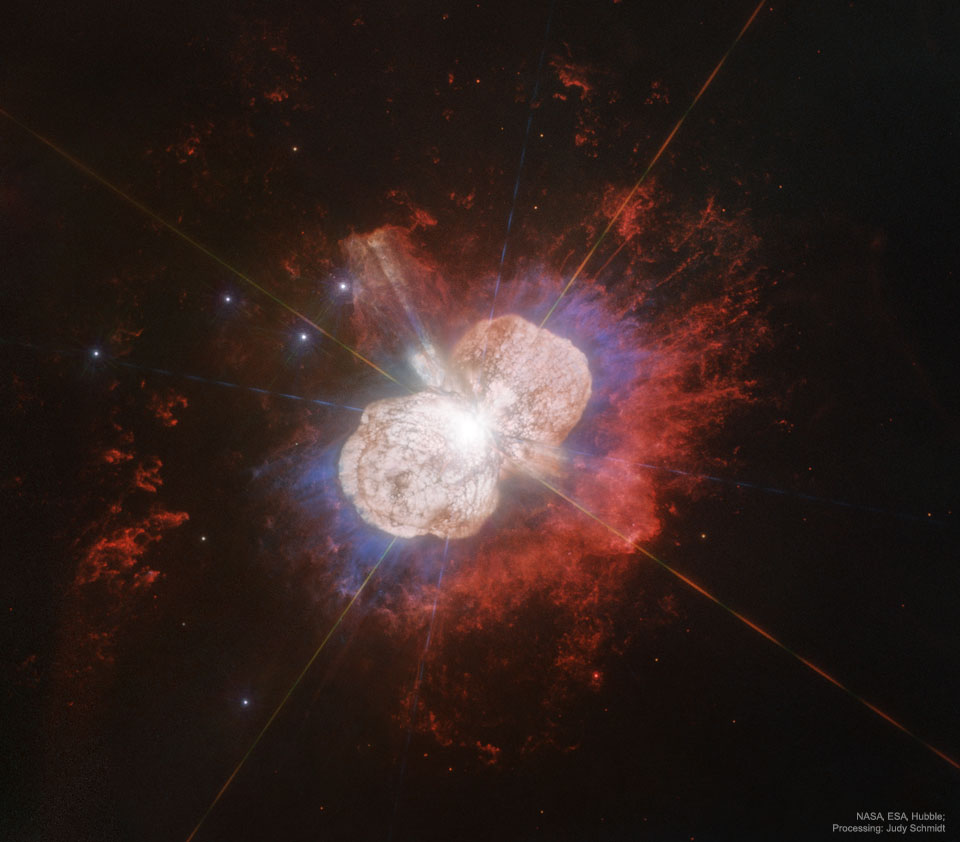A imaxe diaria da NASA

Créditos: NASA - ESA - Hubble
(Pulsar foto para ampliar)
Eta Carinae pode estar a piques de rebentar. Pero ninguén sabe cando - pode ser o próximo ano ou pode ser dentro dun millón de anos a partir de agora. A masa de Eta Carinae - unhas 100 veces maior que a do noso Sol - convértea nunha excelente candidata a supernova completa.
Os rexistros históricos demostran que fai aproximadamente 170 anos, Eta Carinae sufriu unha explosión inusual que a converteu nunha das estrelas máis brillantes do ceo do sur.
Eta Carinae, na nebulosa da Quilla, pénsase que é a única estrela que actualmente emite luz láser de forma natural. Esta imaxe destacada aporta detalles da inusual nebulosa que rodea esta estrela rebelde. As puntas de difracción, provocadas polo telescopio, son visibles como liñas multicolores brillantes que emanan do centro da Eta Carinae.
Os dous lóbulos distintos da Nebulosa do Homúnculo ocupan a rexión central quente, mentres que algunhas estrañas liñas radiais son visibles en vermello esténdense cara á dereita da imaxe. Os lóbulos están cheos de carrís de gas e po que absorben a luz azul e ultravioleta emitida preto do centro. As estrías, porén, permanecen inexplicables.
(Pulsar texto para cambiar de idioma)





